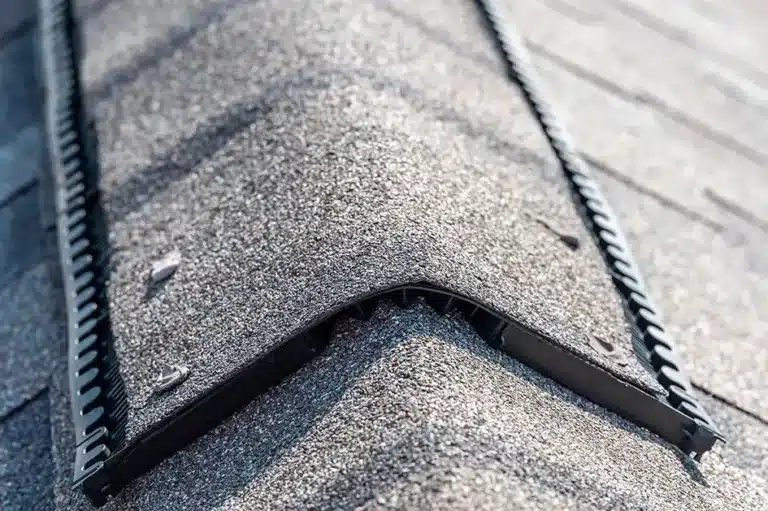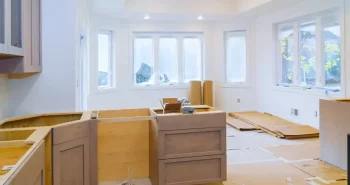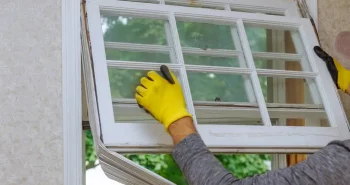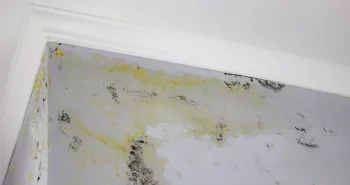The attic is an important part of a home for several reasons. It’s where insulation is installed to help keep your home’s temperatures warm during the winter and cool in the summer. This, in turn, reduces energy costs and improves overall comfort levels. An attic is also a critical component of a building’s structure, and any issues can sacrifice the structural integrity of the entire home. To make sure that everything is working well, and your home is safe, it’s important to pay attention to the ventilation. Proper attic ventilation is crucial for maintaining the overall health and longevity of a home. It helps to remove excess heat and moisture and prevent mold and mildew growth, ice dams, and pest infestation. It can also impact the overall energy efficiency of your residence, which may drastically alter utility bills. For more information, we’ll discuss the most common problems caused by poor attic ventilation and how to address them.
What is Attic Ventilation?
Attic ventilation refers to the process of providing a flow of cool, fresh air into the space and removing hot, humid air. The main purpose of this is to remove excess heat and moisture from the attic, which can help to prevent damage to the roof and other structural components, as well as mold and mildew growth. There are several different types of attic ventilation systems. Some of the most common types include:
Ridge Vents
Ridge vents are vents installed along the peak of a roof. They’re typically made of durable materials such as plastic or metal and can be installed on most types of roofing. Ridge vents come in various designs such as roll vents, which is a strip of venting material that runs the length of the ridge, and turtle vents, which are small individual vents placed along the ridge.
Soffit Vents
Soffit vents are openings in the soffit (the underside of an eave where the roof extends past the siding) that allow for ventilation of the attic space. Soffit vents work in conjunction with other types of vents, such as ridge vents, to provide a continuous flow of air through the attic space.
Gable Vents
Gable vents are openings in the gable (the triangular wall at the end of a pitched roof) that allow for ventilation of the attic space. Gable vents come in various shapes and sizes, such as triangular, rectangular, or circular.
Power Vents
Power vents are vents that use an electric fan to force air out of the attic space, rather than relying on natural convection. They’re often used in hotter climates or in attics with little or no natural ventilation. Power vents can be installed in various locations, such as on the roof or in the attic itself, and are controlled by a thermostat or a humidistat to turn on and off as needed. Power vents are more energy-efficient than traditional vents, as they can be programmed to turn on only when the temperature in the attic reaches a certain level. They tend to remove hot air and moisture more quickly than natural ventilation alone.
8 Common Problems Caused by Poor Ventilation
Attic ventilation is an important aspect of maintaining the overall health and longevity of a home. Without proper ventilation, a number of roofing problems can arise, from heat buildup and moisture accumulation to ice dams and reduced energy efficiency. These issues can lead to structural damage, mold and mildew growth, as well as costly repairs. In addition, poor ventilation can also attract pests and shorten the lifespan of roofing materials. For more information, consider the following problems.
1. Heat Buildup in the Attic
When an attic isn’t properly ventilated, hot air gets trapped inside. This causes temperatures to get progressively warmer. When attic temperatures reach a certain level, they can begin to damage the roofing system and other structural components. Heat buildup may occur due to blocked vents or when there aren’t enough vents to accommodate the size of the attic and roof.
2. Moisture Buildup
Poor ventilation can also lead to moisture buildup in the attic. The prolonged presence of moisture will eventually cause mold and mildew growth, which is both unsightly and dangerous to both your health and the health of your home. If left untreated, mold and mildew can advance to rot and decay, causing building materials to lose strength and deteriorate. This can be catastrophic, as it may go unnoticed until the structural integrity is compromised. Keep an eye out for signs of water damage in your home and undergo roofing inspections regularly to address issues before they advance.
3. Sagging Decking
The roof decking includes the wooden planks or sheets that form the entire surface area of the roof. When it’s compromised, it can begin to bend or droop, causing a sagging appearance. This is often caused by a combination of factors such as improper installation, insufficient ventilation, water damage, age, and improper load distribution. However, sagging decking can be a serious problem as it can weaken the structural integrity of the roof. It’s important to address any signs of sagging as soon as it’s noticed and have it repaired or replaced by a professional roofing contractor.
4. Ice Dams
Poor ventilation can also cause ice dams, which are potentially dangerous ridges of ice that form along the roof’s eaves. Ice dams typically form when there’s a buildup of snow on the roof, and the temperature in the attic is warmer than the outside temperature. The heat from the attic causes the bottom layer snow on the roof to melt, and the water runs down the roof to the eaves. At the eaves, the temperature is usually colder, and the water can freeze again, forming the ice dam. This prevents drainage and as it continues, can begin to put stress on the roofing system. When not properly addressed, it can damage the roof and lead to leaks.
Both improper ventilation and insufficient insulation play a role in the formation of ice dams, so it’s important to work with a professional to ensure your roofing system is working efficiently.
5. Reduced Energy Efficiency
As mentioned, without proper attic ventilation, hot air gets trapped inside and causes temperatures to rise. This heat can then transfer into the living spaces within your home, making it more difficult to regulate the temperature. During summer months, this can put excess strain on your HVAC system, which results in higher energy bills. This can also lead to more expensive HVAC repairs and replacements over time.
6. Reduced Lifespan of Roofing Materials
In addition to all of the above, poor attic ventilation can also drastically reduce the lifespan of your roofing materials. Heat buildup can cause shingles to become brittle and crack, thus requiring more frequent replacements. Moisture buildup caused by a lack of airflow can also weaken roofing materials and decrease the overall lifespan of your entire system. Algae, mold, mildew, and moss growth can cause unsightly discoloration, staining, and shorten the lifespan of your roofing materials. Plus, the added heat and moisture can increase the weight of the roof, which can lead to sagging or even a full collapse if not addressed in a timely manner. By maintaining proper attic ventilation, homeowners can extend the lifespan of their roof and avoid unnecessary repairs or premature roof replacements.
7. Pest Infestation
Finally, poor attic ventilation can attract a variety of pests. Some of the most common types of pests that infest a roof include termites, rats and mice, squirrels, racoons, birds, wasps, bees, and even cockroaches. Each type of pest can cause unique damage and require professional removal, but without correcting the ventilation they will likely continue to happen.
Proper attic ventilation is an important aspect of caring for your home and keeping your family safe. To help you address any ventilation issues, it’s important to find a professional roofing contractor you can trust, like First Star Exteriors. Our contractors can help you determine the amount of ventilation your home needs, assess your current levels, and work to correct any discrepancies between the two. At First Star Exteriors, we pride ourselves on hands-on, personable partnerships with our clients, which is why we always work to make sure that your needs are met. Our team is dedicated to providing quality work with transparent and competitive pricing. To learn more about our ventilation services, or to receive a free quote within 48 hours, contact us today.





